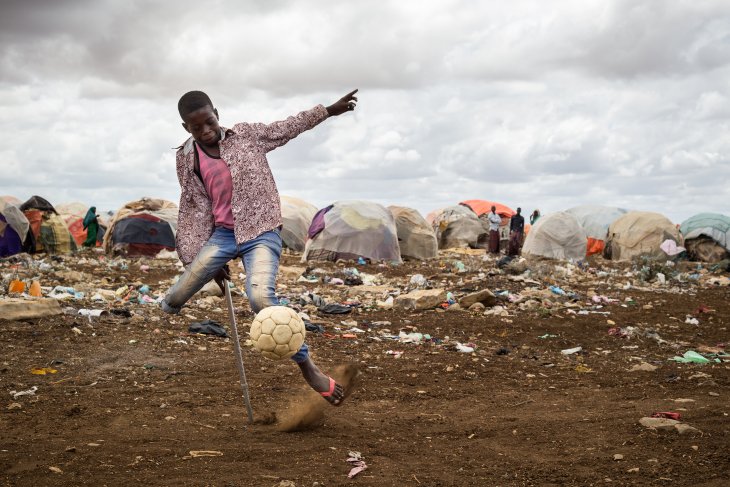Today Save the Children launches its new report Stop the War on Children: The Forgotten Ones.

Photo: Mustafa Saeed / Save the Children
The report is based on PRIO’s sixth annual mapping of children in armed conflict covering the period 1990-2021.
In 2021 our estimates suggest that 449 million children, or more than 1 out of 6 were living in a conflict zone. For the first time since 2013, we found that the overall number of children living in conflict zones seems to have decreased slightly. More specifically, the figure from 2021 represents a decrease of approximately 6%, or 29 million children less than in 2020. However, it also seems that the number of children living in areas of more intense conflicts has increased. Moreover, this annual update is for the period 1990–2021, i.e. prior to the Russian invasion of Ukraine. Hence, next year’s update with figures for 2022 will likely see an increase again in the number of children affected, at least in Europe. Hence, although the number of children living in conflict zones appears to have decreased slightly from 2020 to 2021, there is not much reason to celebrate or lower the attention.
How we measure children affected by conflict
Most conflicts take place in limited geographical areas within countries. In order to provide estimates for the number of children living in conflict zones, we need to isolate these areas. The UCDP Georeferenced Events Dataset (UCDP GED) provides detailed information on the location of each separate conflict event or incidence of organized violence in conflicts around the world, including geographical coordinates. We draw a 50km radius around each of these conflict events and estimate the number of children that live in these areas using population data from CIESIN and the UN. In other words, we define children affected by conflict as any child who lives less than 50 km away from one or more such conflict events. The rationale for this is that 50 km is arguably a reasonable distance within which conflict events could be expected to impact children’s daily lives.
Key findings
- In 2021, approx. 1.65 billion children (about 2/3) were living in a conflict-affected country and approx. 449 million children (more than 1 in 6) were living in a conflict zone – i.e. 50km or less away from one or more conflict events.
- This number of conflict-affected children has decreased for the first time since 2013. However, it seems that the subset of these children living in areas of high intensity conflict has increased.
- In 2021, Africa was the world region with the highest total number of children living in a conflict zone (180 million children), followed by Asia (152 million).
- The Middle East continues to have the highest share of children living in conflict zones (31% of all children in the region).
What can be done?
Armed conflicts and crises affect people of all ages, but children are particularly susceptible
to the detrimental effects of war. Children are often and severely affected by armed conflicts. The UN has defined six ‘grave violations’ of children in armed conflict. These include killing and maiming, recruitment of child soldiers, sexual violence, abduction, attacks on schools and hospitals, and denial of humanitarian access. In addition to being directly exposed to such violations, children also suffer more indirectly from the consequences of war. Children living in conflict-affected areas are more likely to drop out of school, lack access to clean water, and suffer from mortality risks due to illnesses and malnutrition, or lack of vaccines and medical care. There is an urgent need to protect the more than 449 million children that were living in conflict zones in 2021. Concrete measures that should be taken include the following:
- Support high-quality peacekeeping operations in conflict-affected areas.
- Specifically address children’s needs in peace negotiations as early as possible in the peace processes.
- Create safe spaces for children in affected areas.
Further reading
For more information, read Save the Children’s full report, Stop the War on Children 2022: The Forgotten Ones. Available at: https://www.stopwaronchildren.org/
For a policy brief describing our update of the annual mapping of children affected by armed conflict, read our PRIO Conflict Trends Policy Brief 02/2022: ‘Children Affected by Armed Conflict, 1990–2021’. Available at: https://www.prio.org/publications/10868